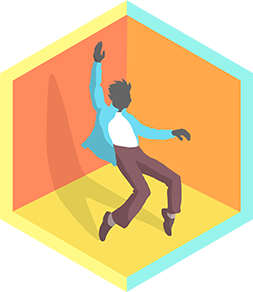Flip that Coin
Flip a coin many times, record heads and tails, calculate experimental probability, compare results, and learn about chance and fairness through hands on play.



Step-by-step guide to Flip that Coin
Step 1
Find a flat table or counter and sit so you can reach the surface comfortably.
Step 2
Put your coin paper and pencil on the table in front of you.
Step 3
Draw a chart with two columns and label the left column Heads and the right column Tails.
Step 4
Choose how many times you will flip the coin and write that number at the top of the page.
Step 5
Hold the coin on your thumb and flip it into the air so it spins and lands flat on the table.
Step 6
Look at the coin and add one tally mark in the correct column for the result you see.
Step 7
Repeat flipping the coin and adding a tally mark each time until you reach the number you chose.
Step 8
Count the tally marks in the Heads column and write that total on your paper.
Step 9
Count the tally marks in the Tails column and write that total on your paper.
Step 10
Divide the number of heads by the total number of flips and write the experimental probability of heads as a fraction and as a decimal or percent.
Step 11
Compare the experimental probability to 50 percent and decide whether the coin seems fair or if chance made the result unusual.
Step 12
Share your finished chart your totals and what you learned about chance on DIY.org.
Final steps
You're almost there! Complete all the steps, bring your creation to life, post it, and conquer the challenge!


Help!?
What can we use instead of a real coin if we don't have one?
If you don't have a coin, use a bottle cap, a small button, or any two-sided token with one side marked differently and follow the same flip-and-tally steps on your paper.
My coin keeps sliding or not landing flat — how can we fix that so we can record clear tallies?
If the coin slides or won't land flat, flip it more vertically from your thumb onto the center of the table or catch it in your palm and place it flat on the table before adding a tally to the Heads or Tails column.
How can I adapt the number of flips and recording for different ages?
For younger children, reduce the flips to 10 and have them color a dot for each tally on the paper chart, while older kids can flip 100 times and calculate the experimental probability as a decimal and percent from their totals.
How can we extend or personalize the Flip that Coin activity once the basic chart is done?
Extend the activity by decorating your coin or bottle cap with stickers to run multiple trials, compare experimental probabilities between trials on the same chart, and share results and what you learned on DIY.org.
Watch videos on how to Flip that Coin
How to make a Flip The Coin Game with HTML, CSS and JavaScript
Facts about probability and chance
🪙 A fair coin has a theoretical 50% chance of landing heads and 50% tails — but real experiments can wiggle around that!
🧪 Mathematician Persi Diaconis showed that the way you flip and catch a coin can create tiny biases you might not notice.
🔁 Seeing 10 heads in a row feels surprising, but each flip is still an independent chance (for a fair coin) — streaks do happen!
📈 Tallying flips and making a chart helps kids practice counting, fractions, and seeing how data reveals patterns.
🎲 The more times you flip, the closer your experimental results usually get to the 50/50 split — that's the Law of Large Numbers in action.
How do you do the "Flip that Coin" activity?
What materials do I need for "Flip that Coin"?
What ages is the "Flip that Coin" activity suitable for?
What are the benefits of doing "Flip that Coin"?


One subscription, many ways to play and learn.
Only $6.99 after trial. No credit card required



